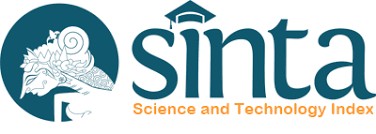The Effect of Rebozo Technique on the Length of Time for Active Phase I Labor in the Noemuti Health Center Area in 2023
DOI:
https://doi.org/10.54209/jurnaleduhealth.v14i3.2737Keywords:
Rebozo technique, length of time of labour, first stage of active phaseAbstract
There are still numerous problems in Indonesia, including prolonged labor that can murder mothers and infants. The rebozo technique is a physiological endeavor to prevent prolonged labor that can accelerate or shorten the active phase of labor. In 2023, the objective is to ascertain the impact of the rebozo technique on the duration of active phase I labor in the Noemuti Health Center Region.Research technique The research design is a Quasi-Experiment employing a One-Group Pretest-Posttest Design with a control. 30 respondents in the population, 15 in the experimental group and 15 in the control group as the cohort. The investigation lasted one month, from April 2022 to May 2023. The rebozo technique intervention group had a rank value of 3.8 and a standard deviation of 2.0, and the p value was greater than 0.005, so it can be concluded that there was a significant difference between the intervention group and the control group. With a p value of 0.003 0.005, mothers who were intervened by the rebozo technique were able to reduce labor time to 6 hours and reduce pain. The conclusion The rebozo technique should be communicated to mothers and families at term gestation regarding the intervention of the rebozo technique if done regularly, it is hoped that when the mother enters the inpartu period, it can accelerate the opening of the cervix and the decrease in the fetal head in laboring mothers during the active phase I, thereby shortening the duration of labor.
References
N. Azis, A. Edinata, and J. F. Andry, “Audit of IT Helpdesk Application Using COBIT 5,” in International Conference of SNIKOM 2021, 2023, vol. 020032.
R. Zahroh and E. Z. Rema, “Pemberian Slow Sroke Back Massage Terhadap Penurunan Nyeri Persalinan Kala I,” Ners Comunity, vol. 12, no. 1, pp. 24–33, 2021.
E. Noftalina, “Upaya Peningkatan Pengetahuan Mengenali Bahaya Nifas Dan Bayi Baru Lahir,” J. Inov. Terap. Pengabdi. Masy. Politek. ‘Aisyiyah Pontianak, vol. 1, no. 1, pp. 1–5, 2021.
M. Utami, S. Kusniasih, and Kamsatun, “Gambaran Pengetahuan Remaja Putri Tentang Usia dan Jarak kehamilan,” J. Kesehat. Siliwangi, vol. 1, no. 1, pp. 15–24, 2020.
F. Salesman, POTRET KESEHATAN MASYARAKAT DI NUSA TENGGARA TIMUR BAYI BARU LAHIR, 1st ed. Surabaya: CV jagad Publising, 2018.
N. Rahmatia, M. Anwar, and S. Sukmawati, “Faktor Yang Mendorong Pencapaian K4 Kunjungan Ibu Hamil Di Puskesmas Anreapi Kabupaten Polewali Mandar,” J-KESMAS J. Kesehat. Masy., vol. 4, no. 2, p. 136, 2019, doi: 10.35329/jkesmas.v4i2.254.
N. Azis, “Pelatihan Pengolahan Data Bagi Guru Sdn Cibening 01,” KRIDA CENDEKIA, vol. 01, no. 08, pp. 1–6, 2022.
D. A. Wulandari and I. H. Utomo, “Responsivitas Dinas Kesehatan Kabupaten Karanganyar dalam Upaya Menurunkan Angka Kematian Ibu (AKI) dan Angka Kematian Bayi (AKB) di Kabupaten Karanganyar,” Wacana Publik, vol. 1, no. 1, p. 117, 2021, doi: 10.20961/wp.v1i1.50895.
N. Azis, “Analisa dan Pancangan Aplikasi Jasa Transaksi Keuangan Pada PT. Tri Perkasa Garmindo,” Ikraith-Informatika, vol. 7, no. 2, pp. 66–71, 2022, doi: 10.37817/ikraith-informatika.v7i2.2254.
S. N. F. Umu Qonitun1, “The Factors That Background the Event of Old Partus for Maternity Mother In RSUD dr. R. Koesma Tuban,” J. Kesehat. dr. Soebandi, vol. Vol 7 No, no. e-ISSN: 2527-7529, pp. 51–57, 2019.
N. Azis and B. A. Handoko, “Analisa dan Perancangan Aplikasi Pengadaan Barang di PT . Sintra,” J. Inf. Syst., vol. I, no. 2, pp. 38–42, 2021.
Deastri Pratiwi, “Determinan Kejadian Asfiksia Neonatorum Pada Bayi Baru Lahir,” J. Ilmu Kesehat. Karya Bunda Husada, vol. 5, no. 2, pp. 19–22, 2019, doi: 10.56861/jikkbh.v5i2.29.
R. D. S. Tanjung and N. Jahriani, “FAKTOR-FAKTOR YANG MEMPENGARUHI PERSALINAN NORMAL DI KLINIK HARAPAN BUNDA KABUPATEN PADANG LAWAS UTARA,” GENTLE BIRTH, vol. 5, no. 1, pp. 1–7, 2022.
R. A. D. Putri and N. P. K. Saputra, “Tatalaksana Penggunaan Forceps pada Posisi Oksiput Posterior Persisten,” JIK, vol. 15, no. 2, pp. 53–62, 2021.
K. D. W. Adnyani, “Prenatal Yoga Untuk Kondisi Kesehatan Ibu Hamil,” JURNALYOGA DAN Kesehat., vol. 4, no. 1, pp. 35–48, 2021.
N. Azis, “ANALISA DAN PERANCANGAN KONSEP APLIKASI BIRDSHIELD,” J. Inf. Syst., vol. I, no. I, pp. 6–11, 2021.
N. Azis and A. M. Rizki, “Rancang Bangun Aplikasi Penjualan Rumah Berbasis Android,” J. Inf. Syst., vol. I, no. November, pp. 54–60, 2021.
D. Munafiah, L. P. Astuti, M. M. Parada, and M. R. M. Demu, “Manfaat Teknik Rebozo Terhadap Kemajuan Persalinan,” Midwifery Care J., vol. 1, no. 3, pp. 23–27, 2020.
Y. Nurpratiwi, M. Hadi, and I. Idriani, “Teknik Rebozo terhadap Intensitas Nyeri Kala I Fase Aktif dan Lamanya Persalinan pada Ibu Multigravida,” J. Keperawatan Silampari, vol. 4, no. 1, pp. 293–304, 2020.
G. A. H. Simbolon and U. D. Siburian, “Efektifitas Teknik Rebozo dalam Lama Persalinan Kala I Fase Aktif pada Ibu Bersalin Primigravida di Wilayah Kabupaten Tapanuli Utara Bulan Januari s/d Oktober 2020,” Syntax Lit. J. Ilm. Indones., vol. 6, no. 1, pp. 140–156, 2021.
Y. Lestari, E. Marsita, T. Hidayat, and A. Zakiyya, “Efektivitas Teknik Rebozo dan Aromaterapi Mawar dalam Mengurangi Waktu Fase Aktif dan Nyeri Persalinan,” J. Sains Kebidanan, vol. 4, no. 2, pp. 52–58, 2022.
I. Musliha, “Efektivitas Teknik Rebozo Shake the Apple (RSTA) Terhadap Intensitas Nyeri Dan Lama Kala 1 Fase Aktif Pada Persalinan Ibu Multigravida: The Effectiveness of the Rebozo Shake the Apple (RASTA) Technique on Pain Intensity and Duration of the 1st Stage of the Active Phase in Multigravida Mother’s Labor,” Indones. Sch. J. Nurs. Midwifery Sci., vol. 2, no. 10, pp. 893–901, 2023.

















